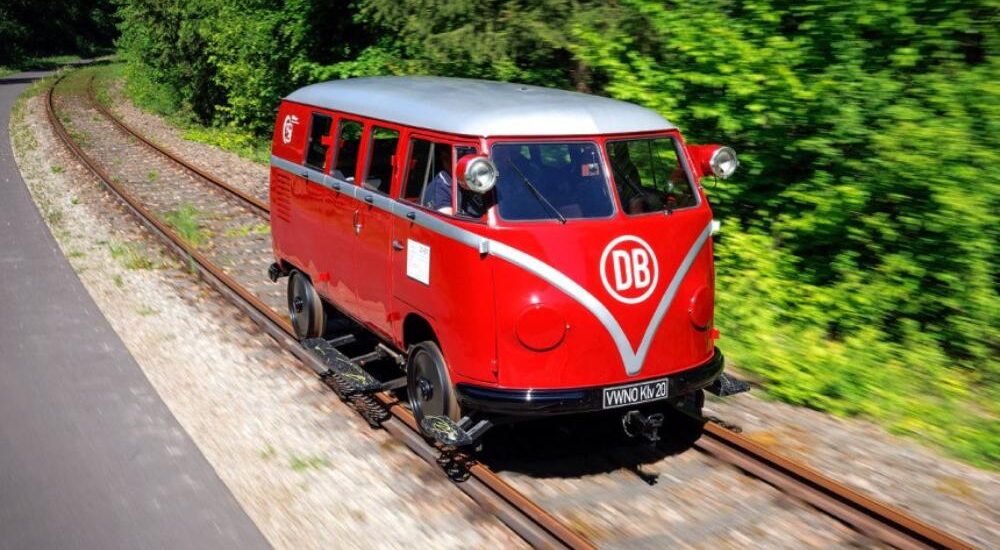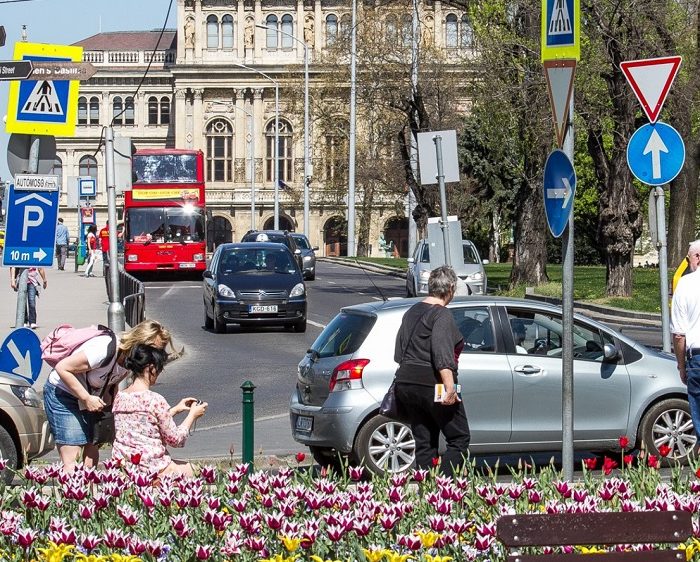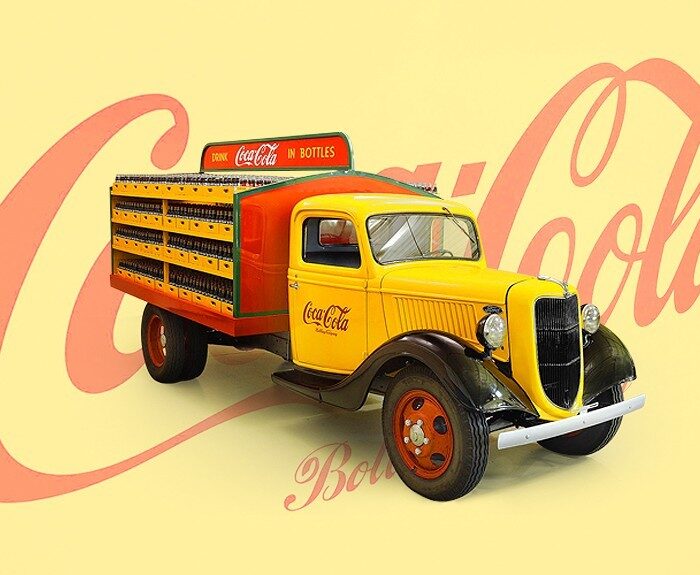A small train station in the German state of Thuringia. The crossing barrier lowers… and along the railroad tracks, an old Volkswagen Transporter appears, motor humming away, sporting a prominent DB (Deutsche Bahn – German Railways) emblem on its front! The reason? Volkswagen’s heritage commercial vehicle division recently acquired a unique railcar based on the first-generation Transporter, affectionately nicknamed “Bulli”.
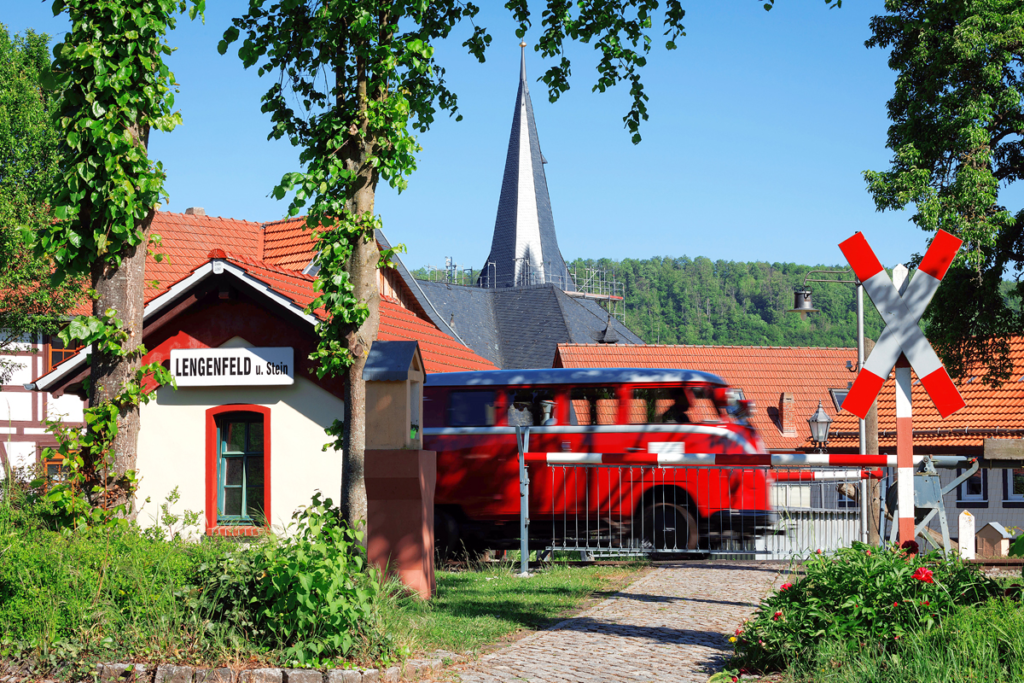
Vehicles capable of rail travel existed well before the Russian Revolution, and during World War I, trucks adapted for rail even hauled entire trains. The USSR’s railway troops used many road-rail vehicles, some of which also served civilian purposes. Today, dual-mode Unimogs serve in the Moscow metro, and back in 2014, I personally took part in testing a similar MAZ truck in Belarus.

Rail-compatible vehicles generally fall into two categories. Dual-mode vehicles can travel on asphalt using regular wheels and switch to rail by lowering guide wheels. Pure rail vehicles, on the other hand, replace standard tires entirely with steel wheels equipped with flanges.
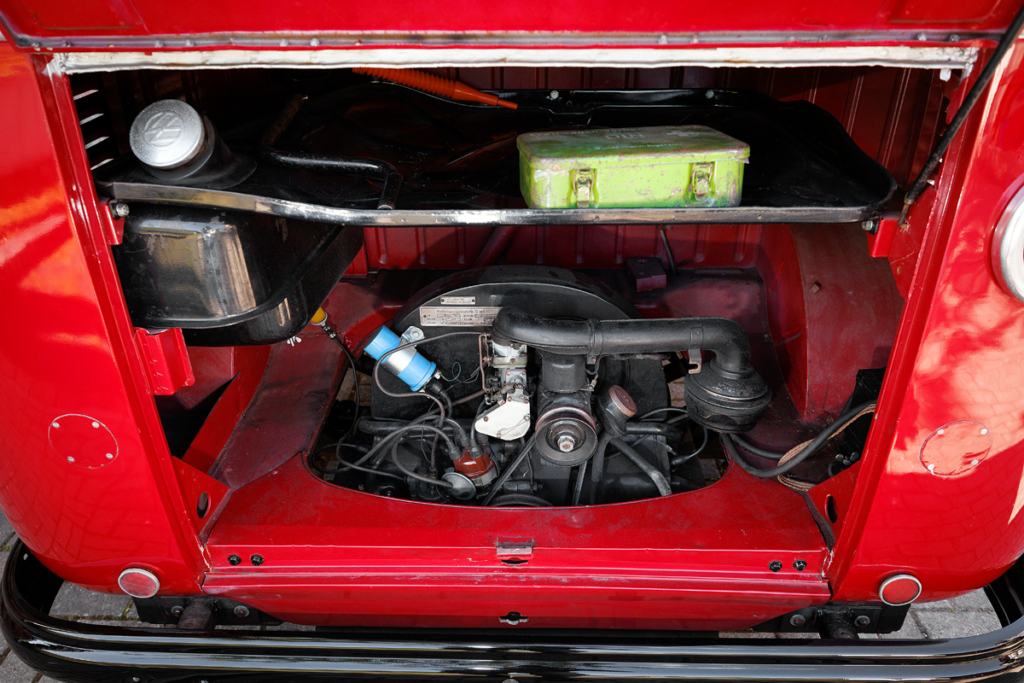
The power supply is provided by a 1.2 opposed engine with cooling.
The Transporter depicted in these photos belongs to the latter category. In 1955, two German companies, Martin Beilhack and Waggon-und Maschinenbau Donauwörth, each produced 15 such railcars. They were designated as Klv-20 (Kleinwagen mit Verbrennungsmotor, translating as “small vehicle with an internal combustion engine”). Their main role was transporting teams tasked with inspecting and repairing rail tracks and signals. The Klv-20 consists of a body from a VW T1 Kombi, a standard powertrain—a 1.2-liter, air-cooled gasoline engine rated at 28 hp, mated to a four-speed gearbox—and a specialized chassis featuring leaf springs and steel wheels measuring 55 cm in diameter. Rubber inserts beneath the wheel rims absorb shocks from track joints, while the vehicle’s body rests on rubber mounts for added comfort.
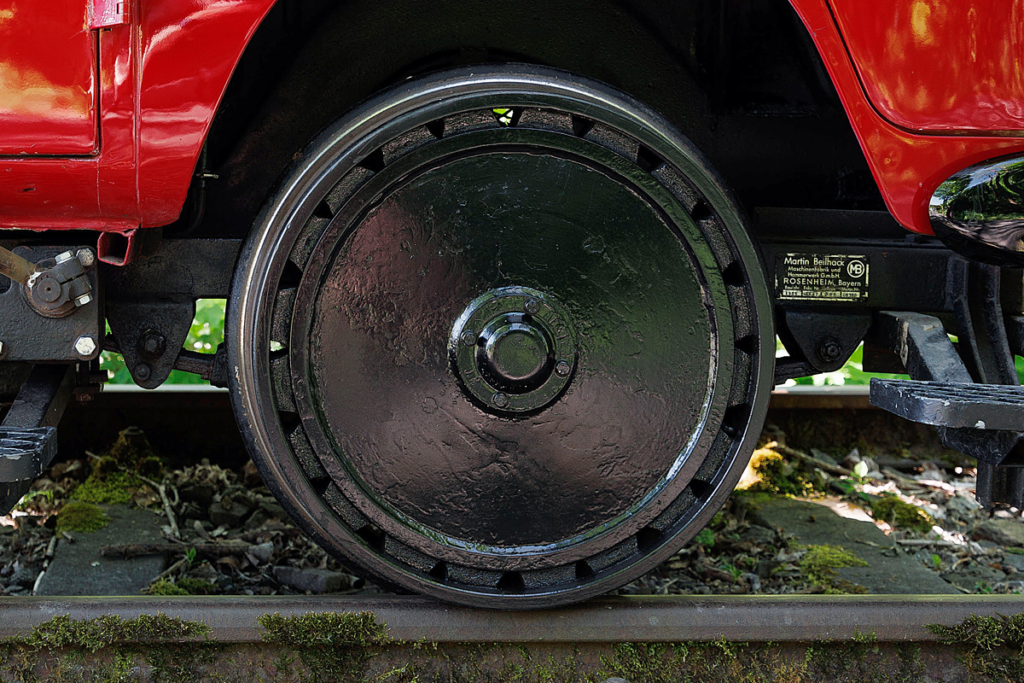
Under the rims of steel wheels – shock-absorbing rubber blocks
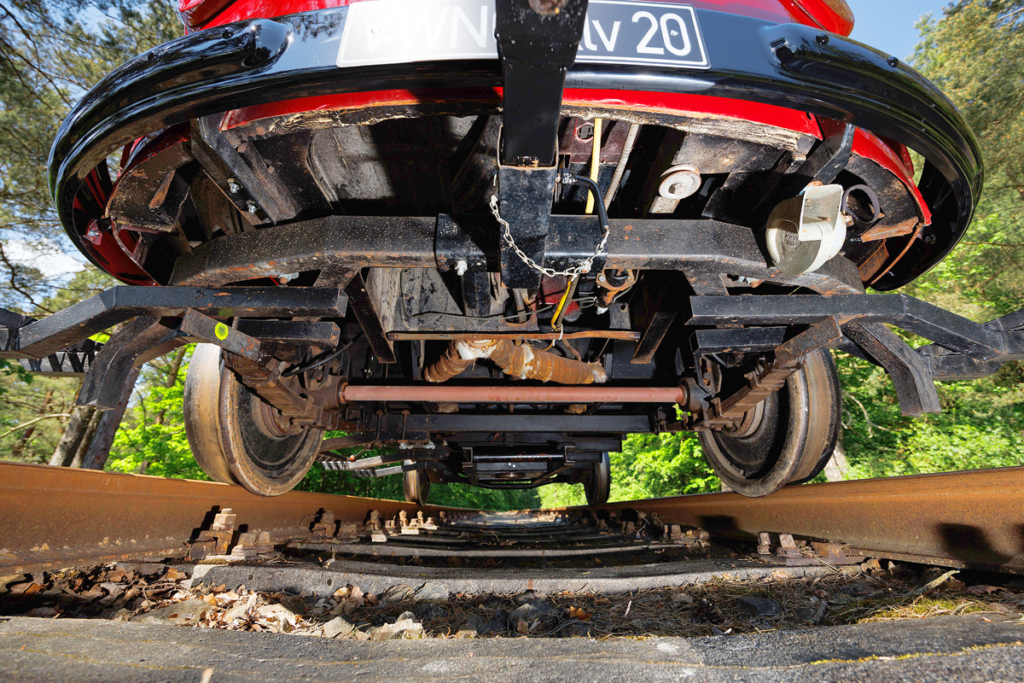
On the spring suspension – almost a railway wheel pair
Beneath the chassis is a hydraulically operated pivot mechanism, allowing a single person to lift and rotate the vehicle on the spot to reverse direction—a similar device was featured in Emir Kusturica’s film Life is a Miracle.
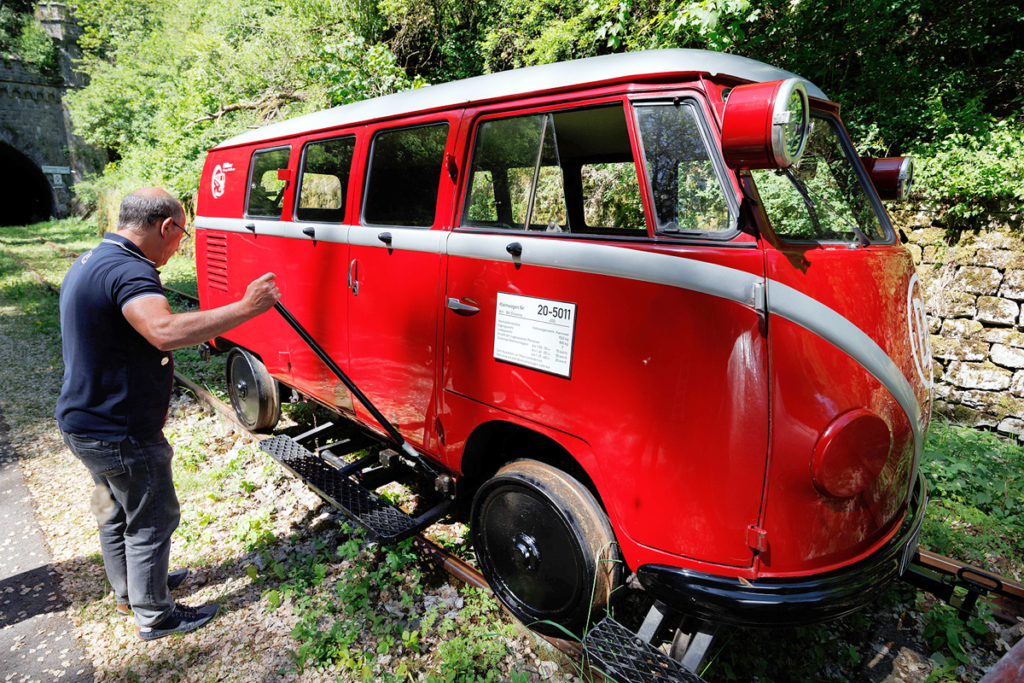
This is how the car is turned on the rails
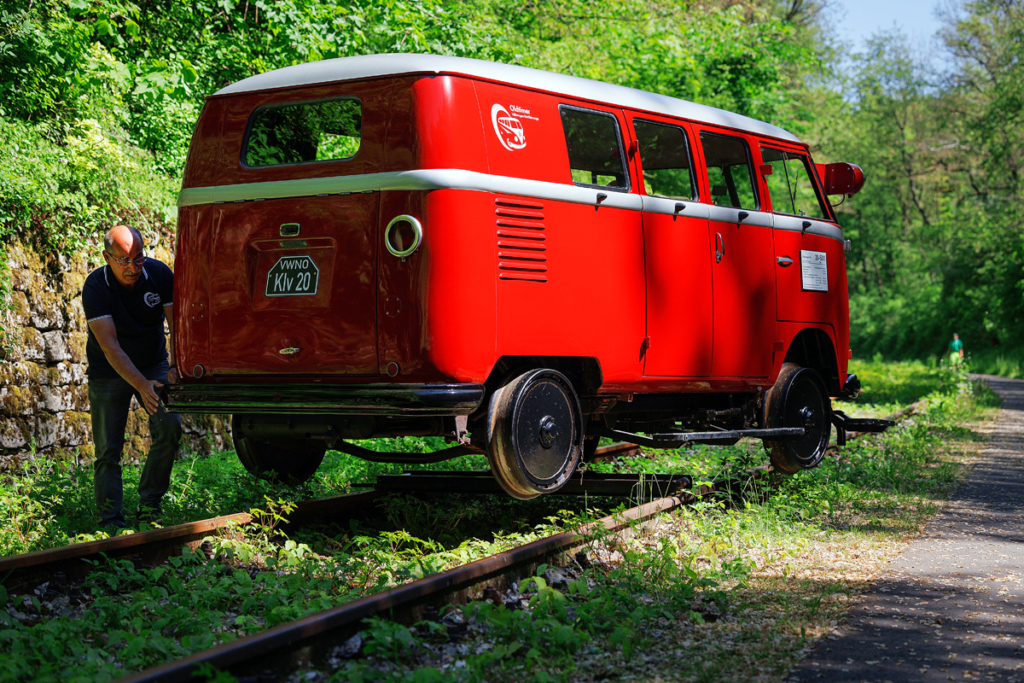
The braking system remains hydraulic with drum brakes, while the steering mechanism has been removed altogether. Consequently, there is no steering wheel inside the cabin, only pedals, gearshift and handbrake levers, a couple of gauges, and switches for lights and windshield wipers.
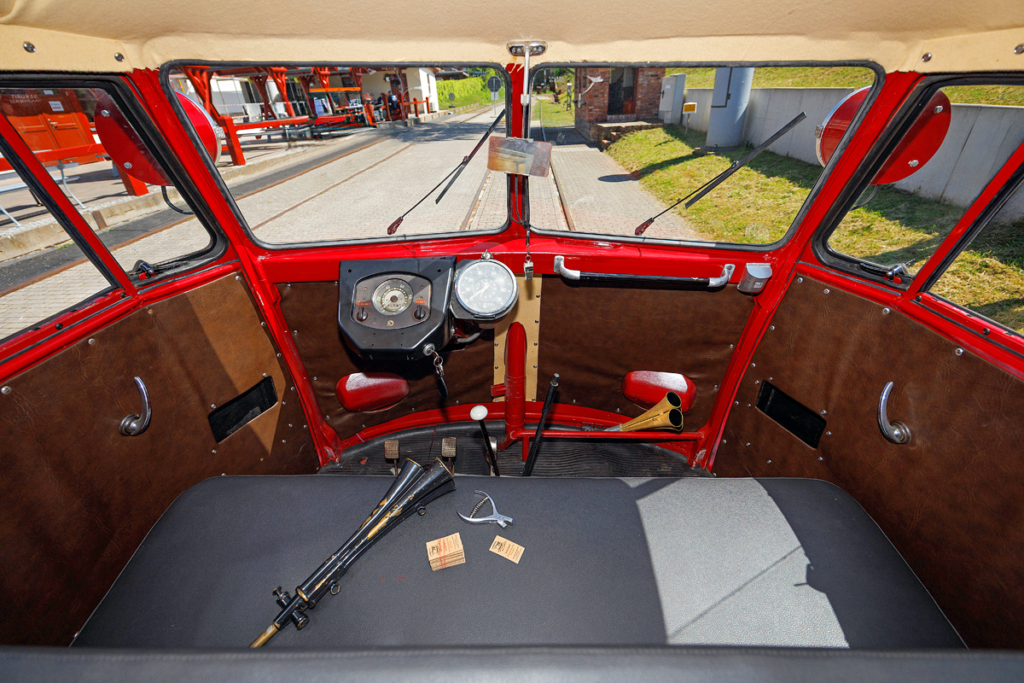
The ascetic cabin has no steering wheel and no rear-view mirrors. But you can see a pair of hand-held horns for giving signals: tu-tu-u, the trolley is leaving!
Standard automotive lighting has been replaced by two white spotlights mounted at the front corners of the body and a single red lamp at the right rear corner. It’s worth noting that the Transporter is 400 kg heavier than a standard model, tipping the scales at 1550 kg.
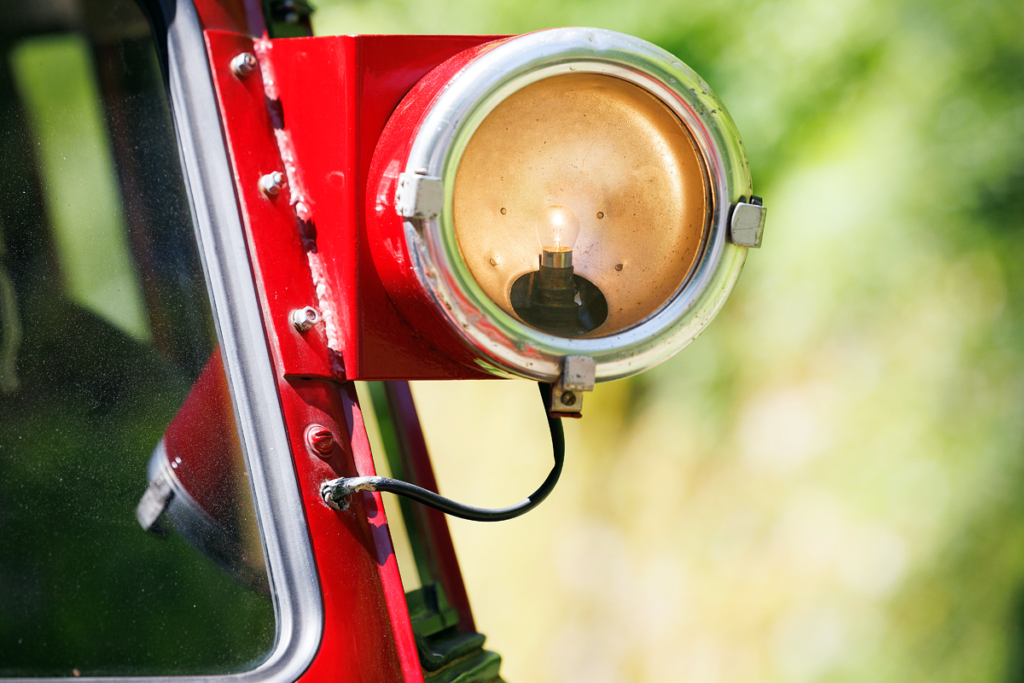
Instead of regular headlights – two spotlights
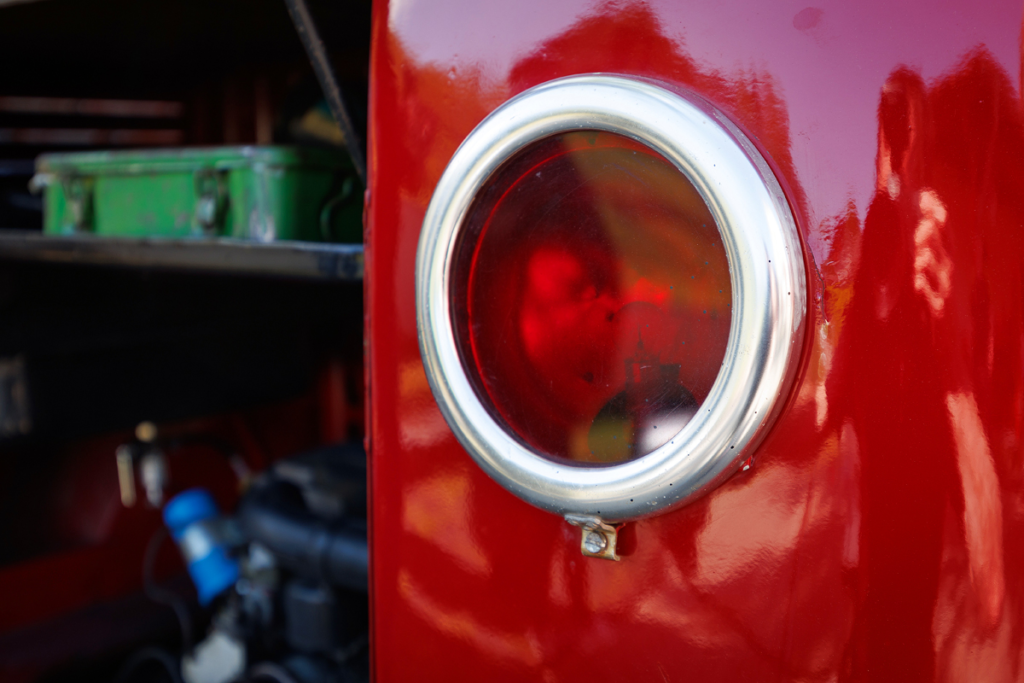
At the back – one red light
The particular vehicle pictured here, built by Beilhack, operated at the Bavarian depot in Plattling, initially serving track maintenance duties before transitioning to signal maintenance. Although retired in the 1970s, the vehicle fortunately escaped being scrapped. In 1988, it was acquired by a collector, and recently, Volkswagen itself repurchased it. Imagine the emotions experienced by Volkswagen staff during its inaugural test run—32 km along the rails, including passage through a five-kilometer tunnel and over a viaduct! Regular trains no longer run here, replaced by railcars carrying tourists. The rail-bound Transporter impressively reaches a top speed of 70 km/h.

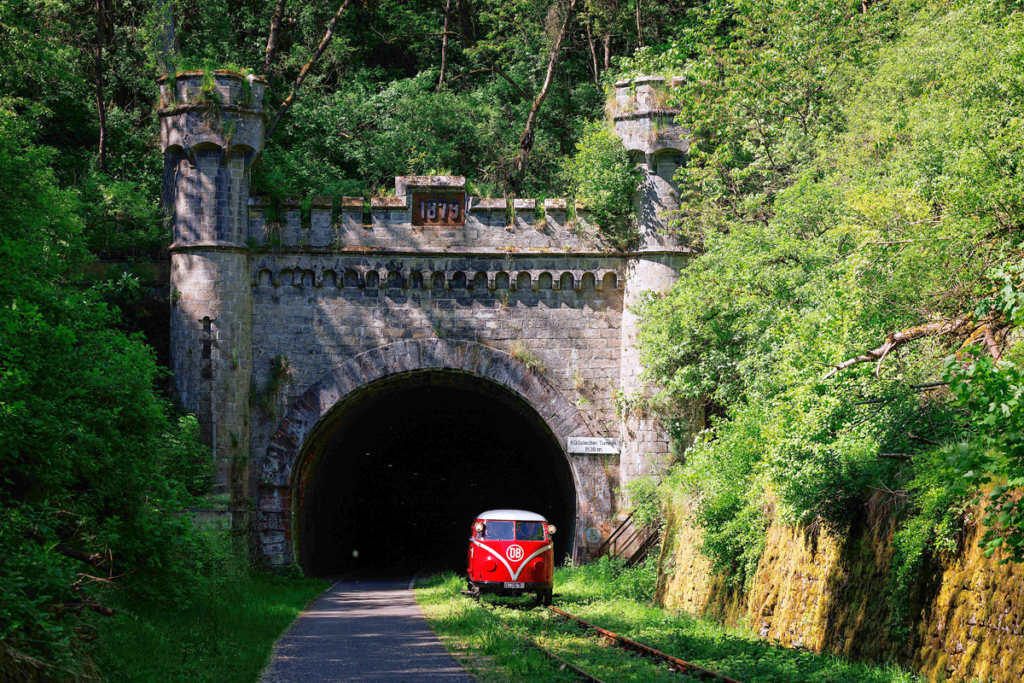
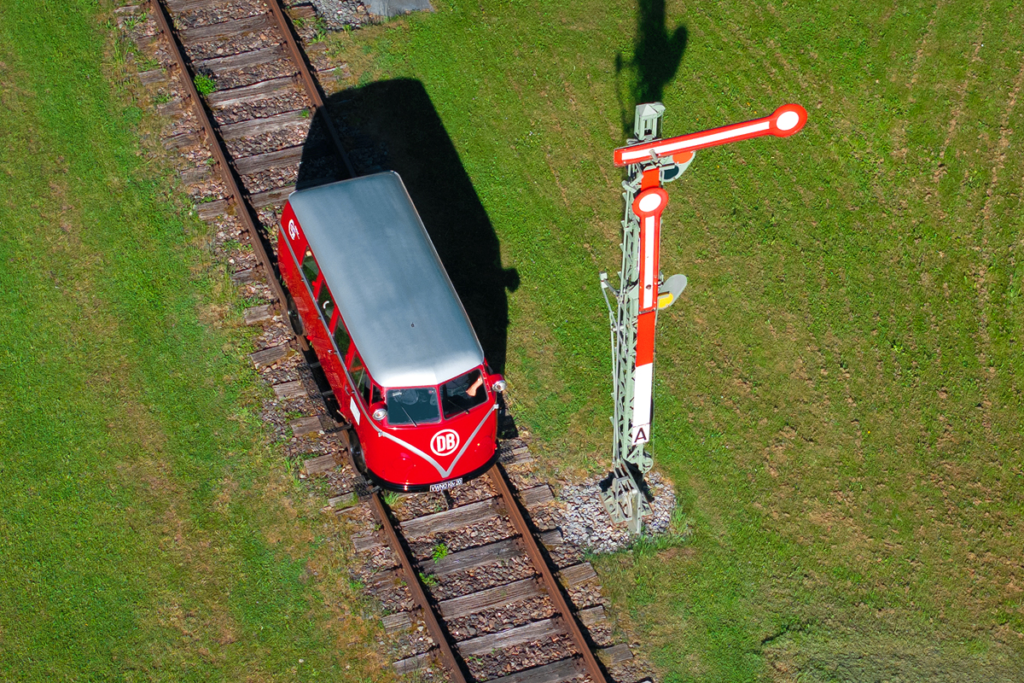
In early June, the restored gem was showcased at a festival in Hanover attended by VW microbus enthusiasts. A logical question arises: do similar vehicles survive in Russia? Surprisingly, yes. Narrow-gauge railway museums still exhibit railcars with cabins based on the GAZ-51 truck, and the Pereslavl Railway Museum even preserves a narrow-gauge ZIM passenger car. Additionally, Moscow’s Sviblovo metro depot houses a rail-bound snowplow converted from a GAZ-63 truck…

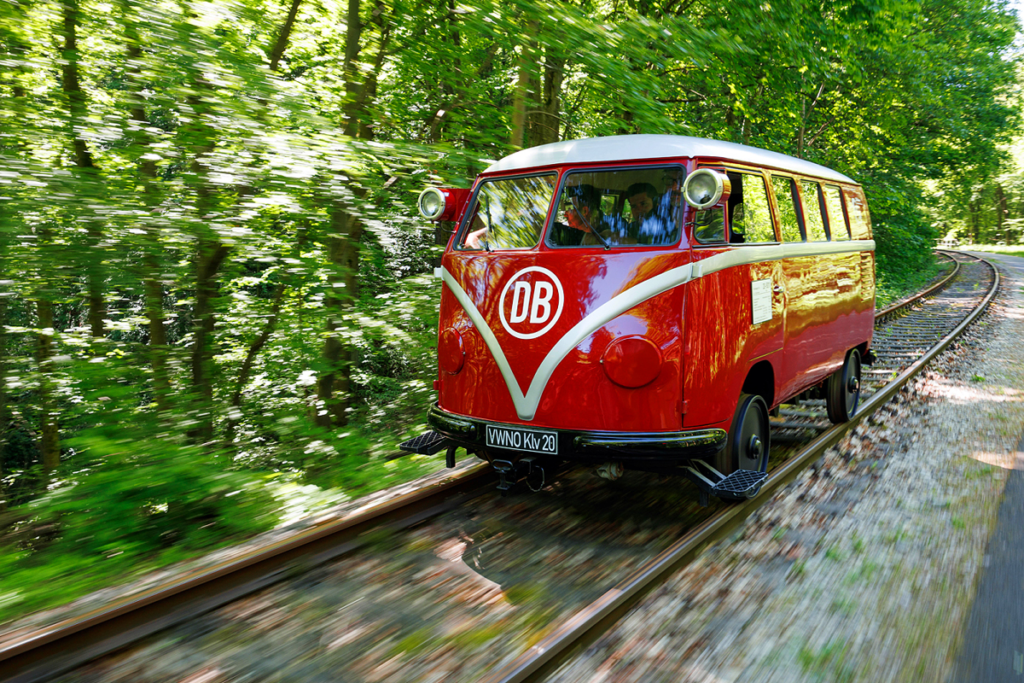
Photo: Volkswagen | Fedor Lapshin
This is a translation. You can read the original article here: Булли чух-чух: в Германии вновь поставили на рельсы VW Transporter 1955 года

Published July 09, 2025 • 4m to read

